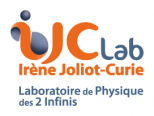Experimental Equipement
The originality and the strength of the Cryogenic Detectors group is to possess a highly diversified experimental and technical environment that allows for the fabrication and the complete characterization of samples or detectors, from their conception and synthesis to the study of their ultra-low temperature (down to 5 mK) properties.
For this, the group has multiple ultra-high vacuum evaporators that have entirely been built in the group. They are grouped in a class 100’000 clean room. They allow for the co-depositions (NbSi or YSi thin films) with in situ ionic bombardments for surface cleaning before the deposition. The typical attained vacuum pressures are of the order of a few 10-9 mbar after chamber heating and a few 10-7 mbar during the depositions. The evaporators are equipped with electron guns (3 or 10 kW) and with crucibles for Joule evaporation. There are some mask-changing devices that enable the synthesis of thin films of different geometries and thicknesses within a single deposition. The thin films production is optimized by the use of the introduction chamber. The following materials are regularly deposited : Nb, Si, Al, Au, Ti, Ag, Pb, SiO, Y.

- NbSi evaporator

- Electrical contacts evaporator

- Evaporation
All massive bolometers are thus entirely fabricated at the CSNSM. However, for the fabrication of bolometer matrices, for which the geometries of interest are too small to be achieved with mechanical masks, some parts of the synthesis are lithography-type techniques, done in collaboration with the technology center “MINERVE”. This is for example the case of Si3N4 membranes for the matrices’ pixels, or the reactive ion etching (RIE) technique sometimes used.
The clean room is moreover equiped with a wire-bonding machine to make micrometer-size electrical contacts on deposited films, via gold or aluminum wires of 25 or 50 microns, with an annealing oven with controlled atmosphere, and with storage boxes under dry nitrogen flux to retain the fabricated bolometers.

- Interdigit

- NbSi-type bolometer
The detectors or the samples are then studied in one of the group’s five cryostats. All cryostats are 3He-4He dilution refrigerators. The most powerful one (base temperature of 7 mK) is dedicated to NbSi thin films fundamental properties. Two other cryostats are used for the study of massive bolometers. The largest one can cool down detectors of up to 1 liter down to 15 mK. The cryostats are equiped with low-noise coaxial cables, with FET-based cold electronics, and with data acquisition systems and data analysis softwares that have been developed by the group. The two last set-ups are so-called “DRY” dilution refrigerators, which do not require additional cryogenic fluids during operation. One is equiped with a 7 T magnetic field and the other is dedicated to bolometric tests.

- Cryostat
The group also uses the experimental facilities of the CSNSM to which it has priority access. The ARAMIS accelerator is for example regularly used for RBS analyses in order to check the samples’ composition. The IRMA implantation facility can be used to modify the fundamental properties of NbSi thin films by ion bombardment.









